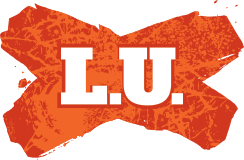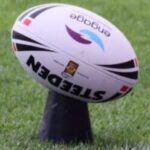Johnny88
Juniors
- Messages
- 1,464
Inside Story: Jason Ryles explains how Dylan Brown became Parramatta’s $13m odd man out
The Eels dropped a bombshell when they performed major spine surgery by moving star playmaker Dylan Brown to hooker. Here's the full story behind the change - and where it leaves Newcastle-bound BrownA few weeks ago, as June 30 began to encroach on Parramatta and every other forward-thinking club in the NRL, Eels coach Jason Ryles sat down with departing Dylan Brown and spoke to him about the future.
The conversation was pretty simple. Brown wouldn’t be at the club next year and Ryles wanted to let him know that he wouldn’t stand in his way if he wanted to go to Newcastle this year. It was up to Brown.
It certainly wasn’t a personality problem, because Brown is one of the more likeable footballers in the NRL. What you see is what you get with Dylan.
He’s a laid-back dude who just so happened to be slapped on the butt by a rainbow when he was targeted by the Knights with a deal believed to be worth upwards of $13 million from next season.
Even Parramatta concede Brown would have been mad not to take it. Inevitably, once the deal was done and Brown’s future was sealed, talk around an early move was always going to ignite.
In the lead-up to June 30, it did just that as pieces began to be shuffled around the NRL. Whispers had been doing the rounds for weeks of a mega-swap involving the Knights, Eels and Tigers.
While Brown had agreed to join the Knights next season, Newcastle back rower Kai Pearce-Paul was on his way to the Wests Tigers and Tigers five-eighth Lachlan Galvin was edging towards the exit door as well.
The triple treat made sense, only Galvin looked to have scuppered the concept when he opted to join the Bulldogs rather than Parramatta.
It was briefly reignited again, albeit seemingly more in the mind of the media than the clubs involved, when Tallyn Da Silva became available.
The Tigers were still interested in getting their hands on Pearce-Paul ahead of schedule and the Knights were keen on Da Silva.
The stars seemed to align when Da Silva chose to join Parramatta but any hopes of late switcheroo quickly went by the wayside.
Pearce-Paul was happy to finish the season in Newcastle and good thing too given they have now lost Dylan Lucas, heaping more pressure on a club and coaching staff that are seemingly the subject of weekly rumours.
The latest suggested Newcastle coach Adam O’Brien could be gone as early as this week, although that has been denied by key figures at the Knights who insist it is business as usual.
The point being that every move at Newcastle right now is being viewed through the prism of a club and coach under pressure. Every loss edges them closer to the abyss.
Ryles is in the fortunate position to still control his own destiny and as such, he and the club can afford to tinker with things.
So Ryles sat down with Brown and laid it out. You can go, but if you choose to stay I can’t guarantee you will play in the halves.
The Eels needed to start planning for the future and sadly Brown wasn’t part of it. There was nothing malicious about the conversation. It was open and honest, which has been a hallmark of Ryles’ start to his career at the Eels.
You know where you stand. Ryles had a similar conversation with Clint Gutherson in the off-season over his move from fullback. Gutherson was given the same option. He chose to leave and joined St George Illawarra.
Brown went the other way. He told Ryles that he understood and would be happy to fit in with whatever the coach wanted. His preference was to finish the season with Parramatta and then move to Newcastle, even if he had no guarantee over where he would play.
So when he was moved to hooker at the weekend, it came as a surprise to many but not all. Crucially, the two figures at the centre of the shock shift - Ryles and Brown - knew exactly what was going on and were on board with it.
Brown didn’t throw his toys out of the cot. He didn’t kick up a stink.
“He’s across it all,” Ryle said.
“This is not a surprise to him. He’s a great kid.”
The challenge for Ryles now is to determine his next move. Ryley Smith is due back this week and the coaching staff have a huge opinion of Da Silva.
They both need to play so hooker seems out of the question for Brown. He could move back to five-eighth but the Eels are keen to work out whether they have a player in Joash Papalii and that means giving him game time in the halves.
Papalii is young and promising but behind him, the Eels have two of the best young playmakers in the game.
Lincoln Fletcher is a halfback who played Australian schoolboys last year and is signed through until the end of 2027.
Five-eighth Lorenzo Talataina was the SG Ball player of the year and playing alongside Fletcher as they led the side to the grand final, where they eventually lost to the Sydney Roosters in extra time.
Ryles won’t rush them, although his level of patience may be influenced by the performance of Papalii over the closing weeks of the season.
If Papalii can show he is up to it in coming weeks, the Eels can afford to take their time with their young players. If not, the level of urgency grows.
Regardless, Parramatta need to know what they have got. They could have maintained the status quo, maybe won a couple of extra games, but how would that have helped them heading into next season?
The finals are already out of reach and every game now is a chance to plan for 2026. The only way they can do that is by giving Papalii time in the No.6 jersey, which means Brown is the odd one out.
The good news is that he is OK with it. Ryles insists that Brown won’t kick stones and make life miserable for those around him.
“It’s pretty straight forward for me,” Ryles said.
“He made a decision that is best for him and we need to make one that is best for the club. That’s the reality of it.


